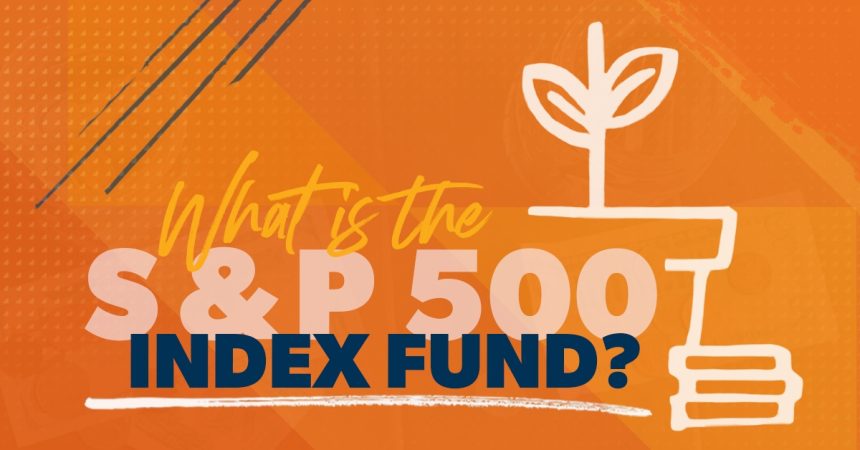Not sure which funds to invest in for retirement? We hear you.
You’ve probably heard a lot about S&P 500 index funds. It’s a bit of an investing buzzword. But what are S&P 500 index funds and are they a good place to invest your money?
Basically, the S&P 500 index (or Standard & Poor’s 500) is what’s called a stock market index. An index is simply a measuring stick—a way to track the progress of the stock market. The S&P 500 index measures the performance of the top 500 American companies on the stock market. Still with us? Great! There are a few more key things to understand about the S&P 500 index, including index funds. Let’s break it all down.
What Is an S&P 500 Index Fund?
An S&P 500 index fund is a type of mutual fund that buys stock in the companies on the S&P 500 index. On one hand, that’s not a bad deal because the S&P 500 index accounts for 80% of the stock market’s value. The entire investing industry considers it the best single gauge of the stock market.1 On the other hand, an index fund that follows the S&P 500 will perform no worse, but also no better, than this section of the market. That’s an important detail to remember.
What are Index Funds?
S&P 500 index funds, like all index funds, are a passive form of investing. Index funds aren’t actively managed by a fund manager looking to beat the market but instead are designed to mirror the performance of the index—like the S&P 500. That’s why index funds settle for “average” returns.
You probably have the option to invest in S&P 500 index funds in your workplace 401(k) or your IRA. But should you? Is average really the best you can do for your retirement? We’ll circle back to these questions in a few minutes. First, let’s go over how S&P 500 index funds work.
How Does an S&P 500 Index Fund Work?
It’s pretty simple: If you invest in an S&P 500 index fund, you’ll own shares of all 500 stocks that make up the index. Those companies can—and do—change if the S&P 500 adds or drops some companies for others in the actual index.
You can invest in an S&P index fund through several different investment firms. The only real difference between them is the expense ratios (aka fees). Higher fees mean less of a return for you.
It’s also worth noting that an S&P 500 index fund is fairly diversified. Its investments are spread out among 11 major industries, and no sector has more than 30% of the money invested.2 Here’s a look at the different business sectors that make up the index.
S&P 500 Index Companies
You’ll certainly recognize some of the big names that help make up the S&P 500 index fund—we’re talking Apple, Alphabet/Google (it has two types of shares in the index), Amazon, Berkshire Hathaway, Facebook, JPMorgan Chase & Co, Microsoft, NVIDIA Corp, and Tesla. And the performance of these 10 largest companies in the index accounts for more than a quarter of the trading activity and overall return.3
Should I Invest in an S&P 500 Index Fund?
Before you put your money in an index fund, you need to understand their pros and cons. Let’s take a closer look.
Pros of Index Funds
- Index funds are automatically diversified. Like we talked about before, most index funds—like the S&P 500—come packaged with top American companies in different types of industries.
- Index funds can have lower expense ratios. Because index funds are passively managed (remember, the fund just follows the index), they can have lower expense ratios, aka administrative fees. And that attracts a lot of investors.
- Index funds are predictable. Again, index funds mirror the market. What you see is what you get. But that’s all you get, including in your returns.
Cons of Index Funds
- Index funds settle for average. This is the main problem with index funds. All they do is keep up with the market. We don’t think that’s good enough for you. Why keep up when you can beat the market?
- Index funds aren’t very flexible. S&P index funds—like other index funds—only change if the S&P 500 adds or drops companies. So up-and-coming and international companies are almost always off the table. (No fun!)
- Index funds can be more expensive. Wait a minute. Aren’t index funds supposed to be the cheaper option? Well, not exactly. Index funds can charge a hefty maintenance fee. You might see this as a 12b-1 fee. And as you’re about to learn, returns can be much higher on growth stock mutual funds.
- Index funds are passive. There’s no built-in professional management when it comes to index funds. It’s all on you, which can mean a lot of unnecessary stress. And all that stress just to make average returns? No, thank you!
Index Funds vs. Growth Stock Mutual Funds
Where the S&P 500—and many other index funds—fall short is in the rate of return. Hear us on this—you want to invest in a fund that will beat the market average, not match it. A good growth stock mutual fund outperforms an index fund.
Market chaos, inflation, your future—work with a pro to navigate this stuff.
From 2019 to 2022, the S&P 500 return was just over 26%. While that’s not bad, it doesn’t keep pace with growth stock mutual funds. The best growth stock mutual funds were returning just under 68%!4
Bottom line: With S&P 500 index funds, you might save a percent or two on the fees, but you’ll give up a few percent (and maybe a lot more) on the return. And that creates a long-term growth gap. Some mutual funds underperform the S&P 500—and you want to stay far away from those—but there are many mutual funds out there that outperform the index.
Remember, you’re not here to just keep up with the pack—you’re here to win—you’re here to retire a freakin’ millionaire!
Get With a SmartVestor Pro
So if picking and choosing the right funds is such a big deal, where should you invest? We always recommend folks spread their dollars equally among a mix of four types of mutual funds: growth and income, growth, aggressive growth, and international. This mixture will help ensure your investments are well diversified and help you beat the market average.
But listen, you should never invest in anything you don’t understand. A Ramsey Solutions research study found that 40% of Americans don’t have anyone they trust for retirement advice.5 If you’re one of those people, let’s change that!
It’s always a good idea to sit down with someone, like a SmartVestor Pro, who can help you set goals for your financial future and help you understand all your options, from index funds to growth stock mutual funds. And when the market dips—and it always does—they can be your voice of reason and keep you on track.
Find your SmartVestor Pro today!
This article provides general guidelines about investing topics. Your situation may be unique. To discuss a plan for your situation, connect with a SmartVestor Pro. Ramsey Solutions is a paid, non-client promoter of participating Pros.
Read the full article here














